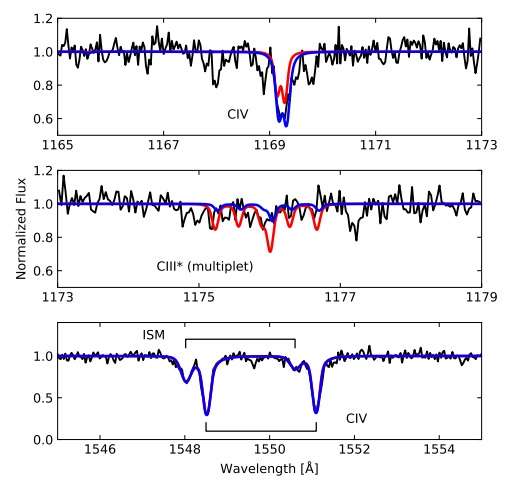August 14, 2017 report
Astronomers reveal insights into the nature of a distant ultraviolet-bright star

A team of astronomers led by William Dixon of the Space Telescope Science Institute in Baltimore, Maryland, has presented new spectral analysis of the ultraviolet-bright star Y453. The study, presented Aug. 3 in a paper published on arXiv.org, reveals insights about the star's physical parameters, chemical composition and its evolution.
Y453 is part of the globular cluster Messier 4, or M4 (also known as NGC 6121) located about 7,200 light years away from the Earth. The enigmatic ultraviolet-bright stars like Y453 are evolving objects, either from the asymptotic giant branch (AGB) or directly from the extreme horizontal branch (EHB), onto the white-dwarf cooling curve. Therefore, stellar parameters and photospheric abundances of such stars could improve our knowledge about low-mass stellar evolution and white-dwarf formation.
In order to better understand Y453 and ultraviolet-bright stars in general, Dixon's team has observed this star with the Cosmic Origins Spectrograph (COS) on the Hubble Space Telescope (HST). The observations, carried out on February 9, 2015, allowed the researchers to obtain important information about Y453.
"We have performed a spectral analysis of the UV-bright star Y453 in M4," the authors wrote in the paper. The team acquired crucial information about Y453's mass, radius, luminosity, effective temperature and photospheric abundances. They compared these parameters with new evolutionary models, and the star's abundances with the cluster values.
According to the study, Y453 has an effective temperature of 71,675 K, which proves that the star is much hotter than previously thought. Initial optical observations showed that it has an effective temperature of about 56,000 K. The spectral analysis reveals that Y453 has a mass of approximately 0.53 solar masses, a radius of just 0.17 solar radii, and a luminosity (log luminosity of Y453/solar luminosity) of 2.84. These values are consistent with the values expected of an evolved star in a globular cluster.
"We scale the model to match the star's optical and near-infrared magnitudes and derive a stellar mass and luminosity that are consistent with the values expected of an evolved star in M4," the paper reads.
The values derived by researchers indicate that Y453 most likely evolved from the blue horizontal branch, departing the asymptotic giant branch before third dredge-up. The researchers also measured the star's photospheric abundances of helium (He), carbon (C), nitrogen (N), oxygen (O), silicon (Si), sulfur (S), titanium (Ti), chromium (Cr), iron (Fe), and nickel (Ni). They found that the abundances of carbon, nitrogen and oxygen are 0.25 dex greater than those of the second-generation red-giant branch (RGB) stars, while the silicon and sulfur abundances match those of the cluster. Moreover, abundances of the iron-peak elements (except for iron itself) are enhanced by 1.0 to 3.0 dex.
"It is likely that the observed abundances of Y453 represent the combined effects of multiple diffusion and mechanical processes within the stellar photosphere," the astronomers concluded.
More information: arxiv.org/pdf/1708.01315.pdf
© 2017 Phys.org





















